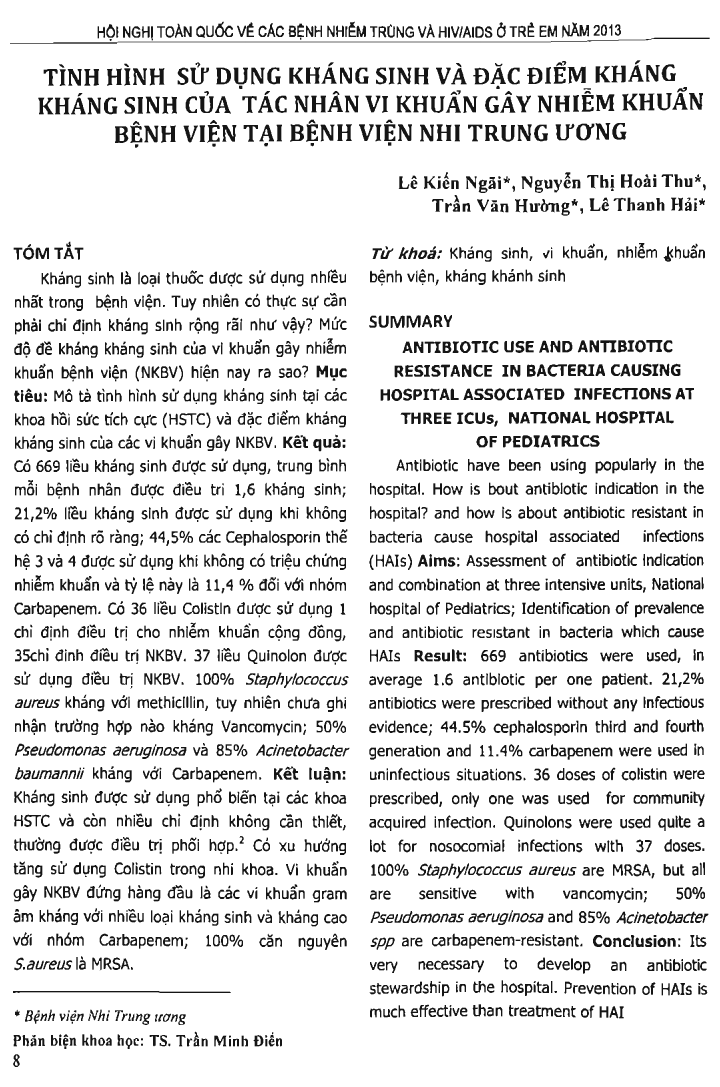
Antibiotic have been using popularly in the hospital. How is bout antibiotic indication in the hospital? and how is about antibiotic resistant in bacteria cause hospital associated infections (HAIs) Aims: Assessment of antibiotic indication and combination at three intensive units, National hospital of Pediatrics; Identification of prevalence and antibiotic resistant in baderia which cause HAIs Result: 669 antibiotics were used, in average 1.6 antibiotic per one patient. 21,2 percent antibiotics were prescribed with out any infectious evidence; 44.5 percent cephalosporin'third and fourth generation and 11.4 percent carbapenem were used in uninfectious situations. 36 doses, of colistin were prescribed, only one was used for community acquired infection. Quinolons were used quite a lot for nosocomial infections with 37 doses. 100 percent Staphylococcus aureus are MRSA, but all are sensitive with vancomycin; 50 percent Pseudomonas aeruginosa and 85 percent Acinetobacter spp. are carbapenem-resistant. Conclusion: Its very necessary to develop an antibiotic stewardship in the hospital. Prevention of HAIs is much effective than treatment of HAI.
- Đăng nhập để gửi ý kiến
